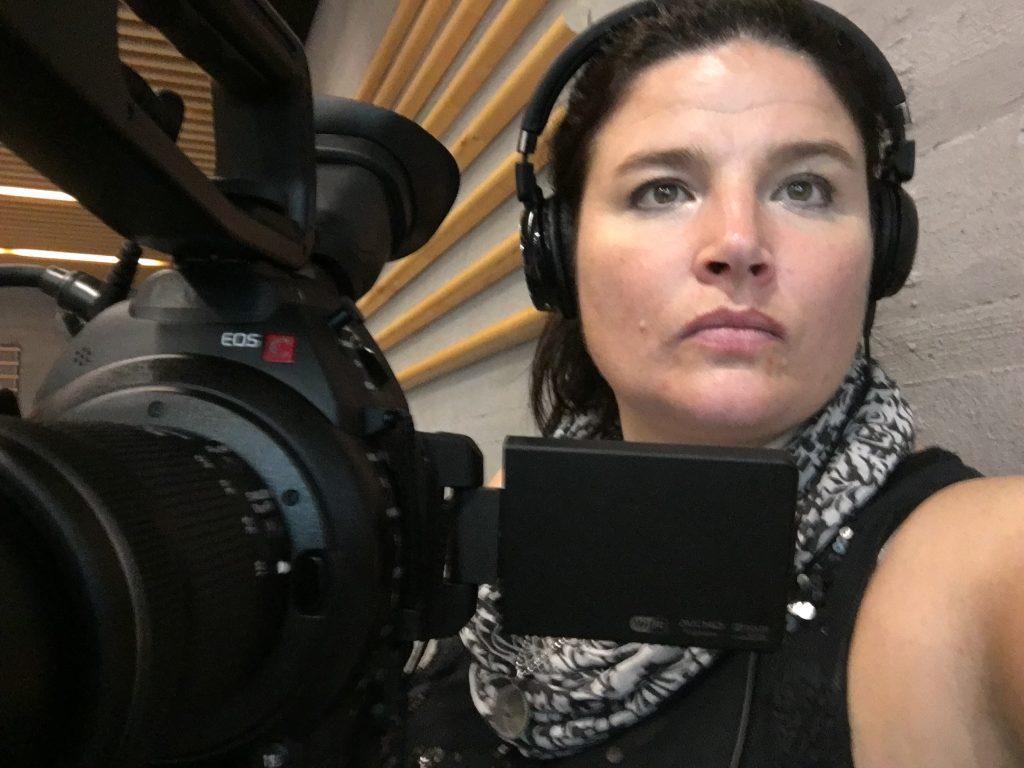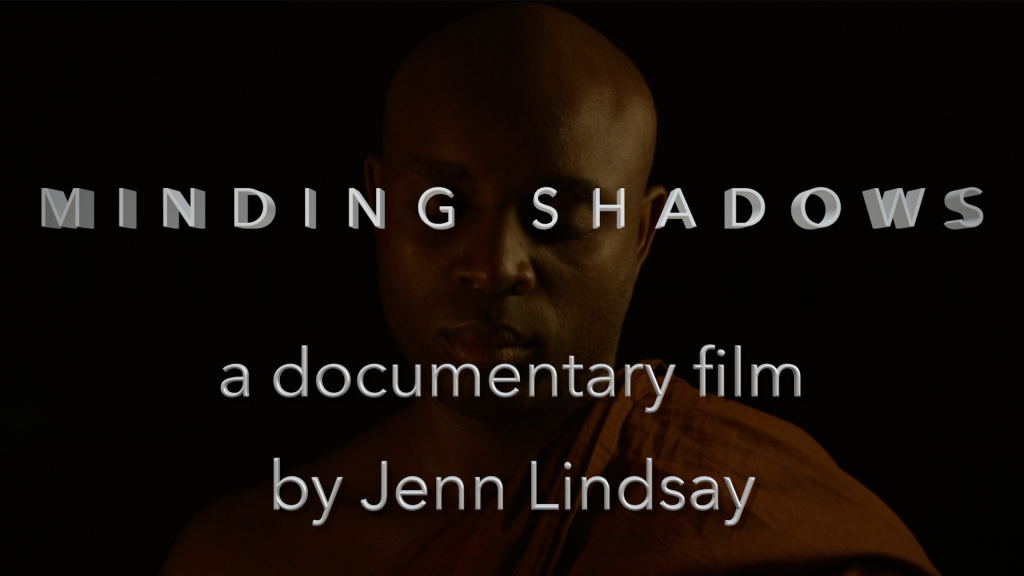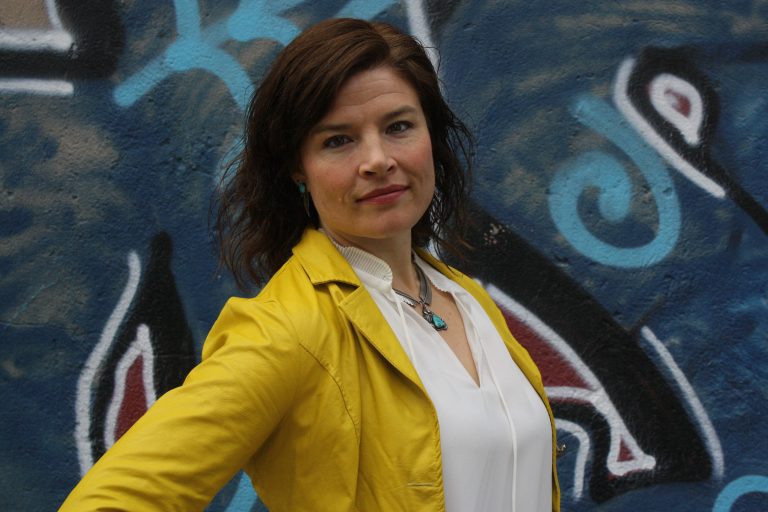We recently interviewed CMAC alum Jenn Lindsay about the film production process and funding of her upcoming film Minding Shadows (see part 1 of this interview here). Check out the crowdfunding campaign here. Note that the campaign ends on July 5 at midnight Pacific Time, so donate now if you are going to!

You mentioned audience and talked about Minding Shadows a little bit. Do you want to say more about what you anticipate the audience will be, and what impact you want to have on that audience with this film?
Jenn Lindsay: In terms of Marketing 101, I think every filmmaker has to go through the learning curve from saying “I think everyone will like my movie” to narrowing in and targeting. I think it’s a great story that will make a lot of people lean in and be engaged. But it’s going to particularly appeal to people who are interested in transformation stories, in stories of people who are who have survived dire circumstances, who have figured out how to thrive and build tools for dealing with their inner demons and shadows. People who are interested in healing, trauma recovery. People who are interested in the Rwandan genocide context, refugees and immigration, African relief efforts. Of course: Buddhism, spiritual seeking.
So there are some distinct audience targets we can tap into. Given the nature of my production company and how it was built out of the university community, we always have the Millennial/Gen Z viewer in mind, too, especially since some of the market research indicates that this age group is part of a resurgence of interest in documentaries.
Initially, we had this idea at my production company that we would also try this sort of innovative business model of writing learning guides to go with all of our media, then marketing them as a DEI training for university student services, offices, and Greek letter organizations (fraternities and sororities), because a lot of them have to do diversity training. And we worked on that sales pipeline for a while, but the DEI market has really collapsed in the last few years because it got super-politicized, unfortunately. So, it looks like we’re kind of back to a distribution model.
With independent films, your distribution options span getting onto some sort of online streamer or a theatrical, but I don’t think this piece is going be right for theaters. It’s not really that kind of a movie. But it certainly could be right for international broadcast avenues. I can definitely see this movie being on PBS. I can see it in a range of different broadcast markets. And, of course, educational distribution, getting professors to order it for their university classroom.
Distribution avenues usually start to become clearer once the film is in the late stages of post-production, and you start going into film festivals and talking to sales agents and distribution companies. A lot of the distribution conversation is somewhat aspirational until things start to get really concrete when you’re in rough cut and beyond, and we’ve got a while to go until we’re there because we’ve just finished filming.
In documentary, unlike narrative, script-based films, all the storytelling happens in the editing phase with documentary. With a script-based, narrative film you’ve got a map, right? And you’re like, OK, we know we have these many characters. They’re going to be in these locations wearing these outfits. And once you go through putting that together in production and filming it. You have a map as to how you’re going to cut it. It’s not exactly paint-by-numbers; you’ve got a clear path, whereas with a documentary you can research your topic.
But the fact is when you’re on the field and you’re going to run and gun with your camera, which is what documentary filmmaking is often called, because it’s like, “Oh, something’s happening.” You don’t know what’s going to happen, and real life is at the same time much more boring and much more fascinating than you can anticipate. And it’s like sailing, with hours of boredom and moments of terror.
And every now and then something amazing happens that completely changes your story. For instance, with Minding Shadows I really thought that the movie was going to be about this guy’s past surviving the genocide by hiding in the forest when he was 13, being traumatized and enraged and turning to martial arts so he could learn to kill someone with his bare hands, being changed by the Zen breathing techniques and Karate, then becoming a monk. I thought that was the story, but then there I was in 2017, in Rwanda, filming him at his monastery in Uganda, and then the abbot of his monastery decided that he was attracting too much Hollywood glamour (yeah, me and my backpack of cameras) and asked him to leave the monastery and sent him to a different monastery in Sri Lanka.
And then he gets to Sri Lanka, where the Sri Lankan government had allowed people to stay indefinitely in monasteries forever, and that month they changed their policy because they’d had some domestic terrorism incidents between Buddhists and Hindus, and they changed their visa requirements so that he could only stay for 90 days. So, he couldn’t go back to Rwanda because he’d been imprisoned there and was still feeling very vulnerable to attack. He couldn’t go back to Uganda because he didn’t have an address. He couldn’t stay in Sri Lanka.
So we found money to get him a ticket back to Africa because we didn’t know where to send him, and he was like sleeping on a couch in Kenya for a while, and then we got him into an interreligious dialogue conference in Vienna that I went to as well, so we met there again in late 2017. And he just decided, “Look, I’m not going to get back on the plane off this continent. I’m going to stay here and declare asylum.”
Then, the Austrians almost deported him because in 2017 the Austrian government was super right-wing, and he was really scared. He ended up taking a night bus through Czechoslovakia. And he got his documents checked, he was impounded, and he had to call someone from the Rwandan community in Berlin to come and rescue him. They had another night drive through the snow to try to get to a refugee camp in the north of Germany. The story went all sorts of ways that we never could have guessed. And now he’s disrobed and he’s working in solar energy panel installation and waiting for his asylum case to come through. It went on a wild path, and that’s the essence of documentary as you really don’t know what’s going to happen as you head into your project.
We don’t know when the rough cut is going to be ready, because we’re still sifting through all of the transcripts and the twists and turns, the stuff that we captured and stuff that we don’t have. We don’t have footage of the night drive through the German Alps, and we don’t have footage of the genocide. Film is a is a visual medium, and you don’t want to overuse talking heads. We still have to figure out how we’re going to visualize a lot of the most important dramatic, amazing moments of the story—probably some kind of animation: shadow, art, shadow puppetry.

One last thing: do you want to say anything about the fundraising you’re currently finishing up?
Jenn Lindsay: I do. The crowdfunding campaign runs through July 5. It’s an all-or-nothing Kickstarter campaign, so if you earn $1 less you don’t get a dime. All the research says that the all-or-nothing model tends to pull in more loyalty because people are watching to see if you make it, and people who are like Robin Hood saviors at the very end swoop in to push you over the line.
This crowdfunding mechanism of fundraising is certainly the final horizon for the independent filmmaker. The funding climate is very competitive, and because of the accessibility of filmmaking technologies everybody and their mother wants to make a documentary and everyone’s applying for the few funding avenues that are available for independent documentaries.
This is the world of grants, private foundations, and, of course, high net-worth individuals. I found we first tried to pursue all three of these avenues. So, we spent over seven years applying for grants for Minding Shadows. Even with a story this cool, this fascinating, this relevant, this unexpected, we got exactly one grant for $3500, which is like nothing in filmmaking, especially when plane tickets or SD cards are involved.
We’d already done a crowdfunding campaign for the previous feature documentary, Simulating Religious Violence because, once you get into the finishing of the film, that’s where the expenses really come in. Color correction has to be done by a person, and professional sound editing has to be done by someone who’s got the chops, the training, the equipment. The legal review: you need a lawyer! They are really expensive. Film festival entries, traveling to your own premieres. The numbers get untenable, really fast.
So, the kind of money that we needed was not being reflected in the attempts we were making on the traditional avenues. Crowdfunding is an amazing way to bring your cause to the grassroots level. And it’s not just about fundraising. Crowdfunding is also about audience-building and planting a foundation of viewership for your film from the very beginning.
Minding Shadows is also a lot more instantly appealing and palatable than Simulating Religious Violence. People still are like, “What, a movie about AI and religion? Whoa! Religious terrorism, that’s too deep. That’s too dark. I don’t want to go. I definitely don’t want to watch that on a plane.” But with Minding Shadows people are like “Whoa! Africa, Buddhism, karate. Cool!” So we felt like there would be some kind of instant appeal with this campaign. And there’s something incredibly beautiful about watching your community upswell with support, people putting in as little as $7 and as many as $7000 to say, “Look, I believe in this. I think this story should exist.”
We’ve thought for many a year about how this movie could find an audience and about social impact. In the world of documentary, it’s become more and more important to be able to develop an impact plan for how you’re going to approach audiences and build audiences. This movie, we think, is perfect for small group grassroots settings and discussions. As I said, we built a learning guide, and we think it could be marketed to church groups, temple groups, sangha groups. The protagonist also developed a 10-week Minding Shadows meditation course with the film being the launching point for that conversation and then a sustained meditation instruction going forward.
Our plan for the rich artifact we feel like we can offer to people through this film, once it exists, has involved building a community around the crowdfunding campaign, and I had a really big shift. Crowdfunding, at the heart of it, is fundraising and fundraising is not that fun—asking people for money. And I realized that, if I just thought about it as asking for money, I was going to feel sad and shy and silly all the time.
But then I was like, wait a second, like we’re actually asking people to join the process of completing this film and to be part of the crowd of people who are committing resources to help the story exist and connect it to people, and whatever avenues it may light up in people’s minds when they watch it, and that we’re inviting some people to not be part of a movement so much as be part of a statement that independent film is maybe the last free form of storytelling out there. But we don’t have access to the distribution avenues that the big players have.
So, it’s something that we can all make together in our own way and put our own thumbprint on and realize as a group. It’s not about me. And it’s not about our protagonist, not about my production company. It’s about all of us believing in these themes being something that might make life a little bit more enjoyable or bearable or breathable for the people who encounter this story.
I’ve been really trying to think of the crowdfunding campaign more as an invitation and an active community building rather than just asking for money. Because there’s something very deep and archetypal about this movie inasmuch as it feels bigger than your average documentary story. This also feels more substantive than your average crowdfunding campaign. We’re at 7, 8 days to go and soon I’ll be in a flat sprint, asking everyone I ever met to help get this movie made and get us over the line.



